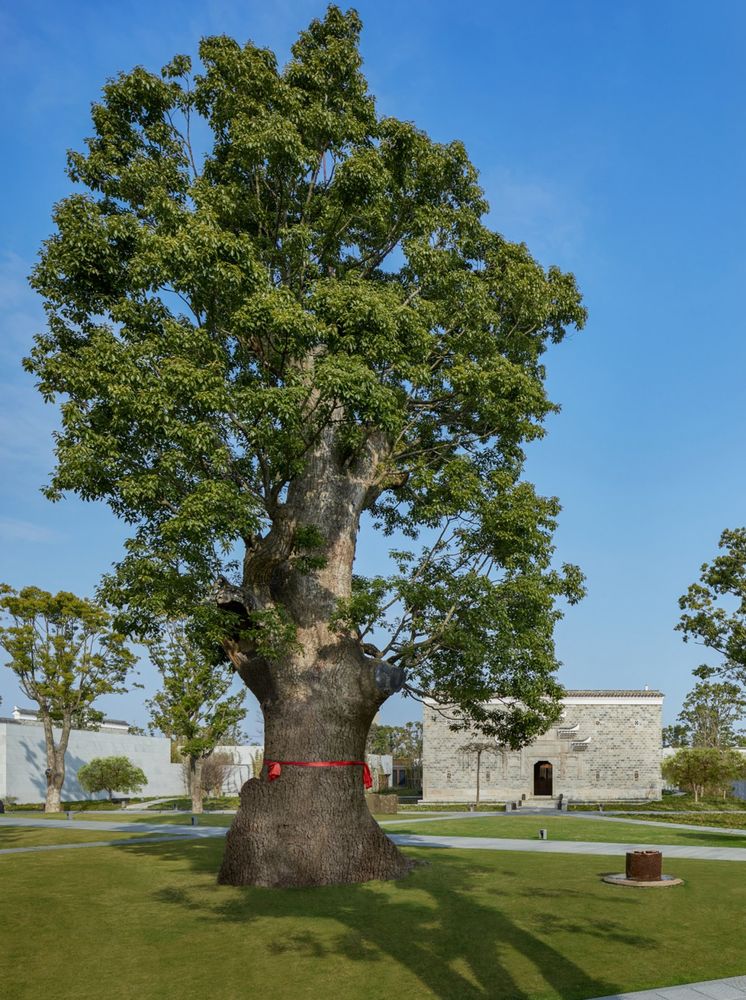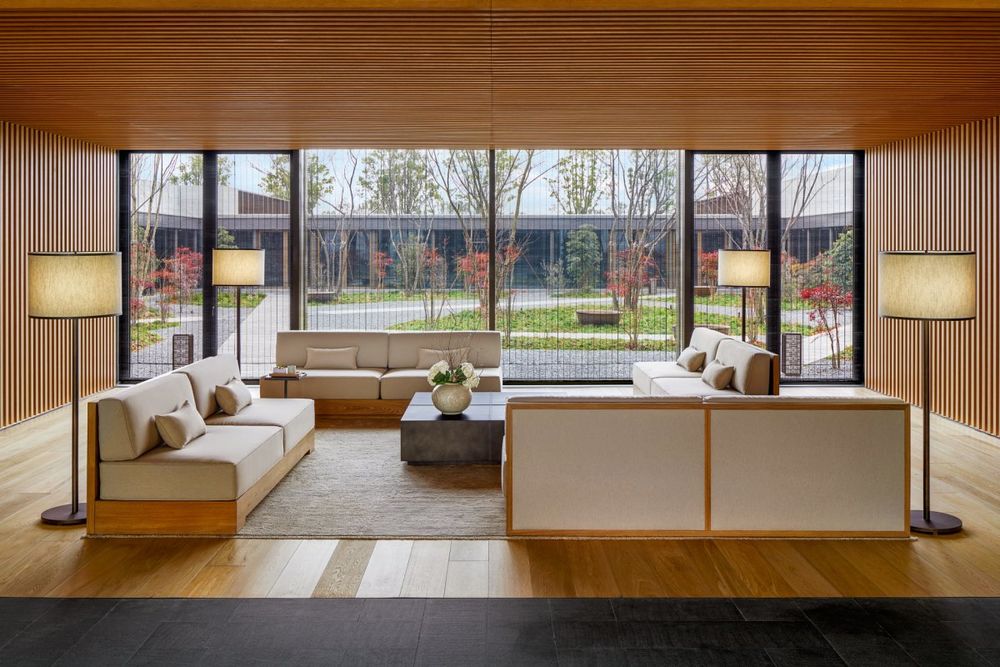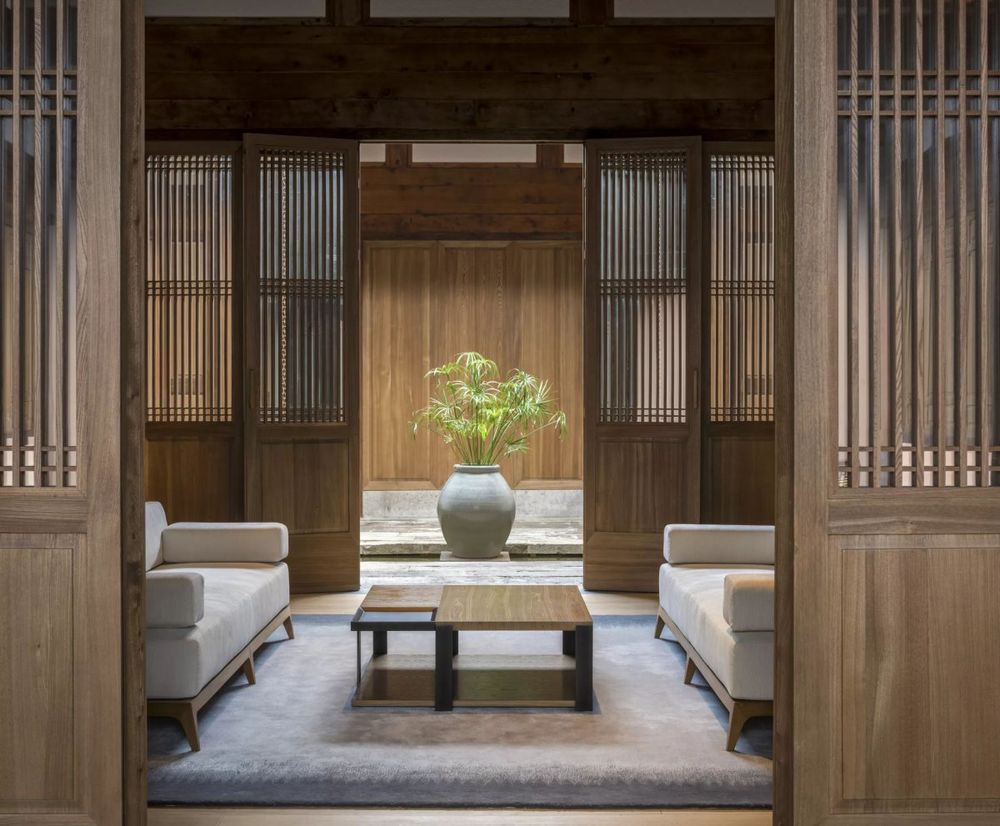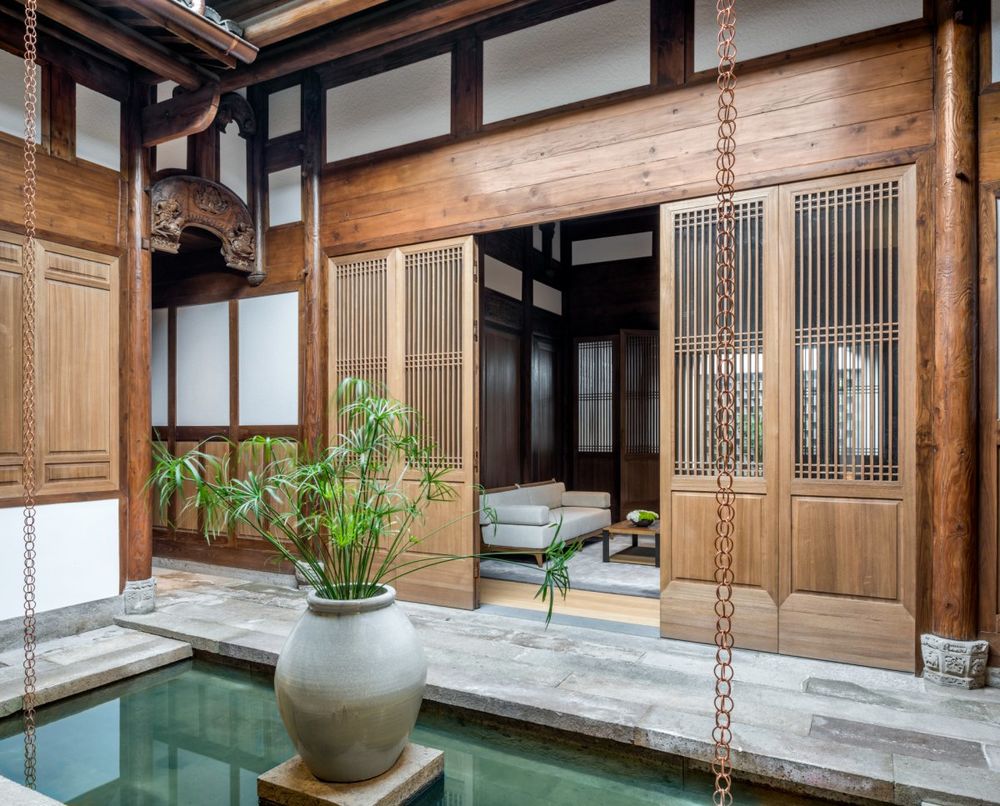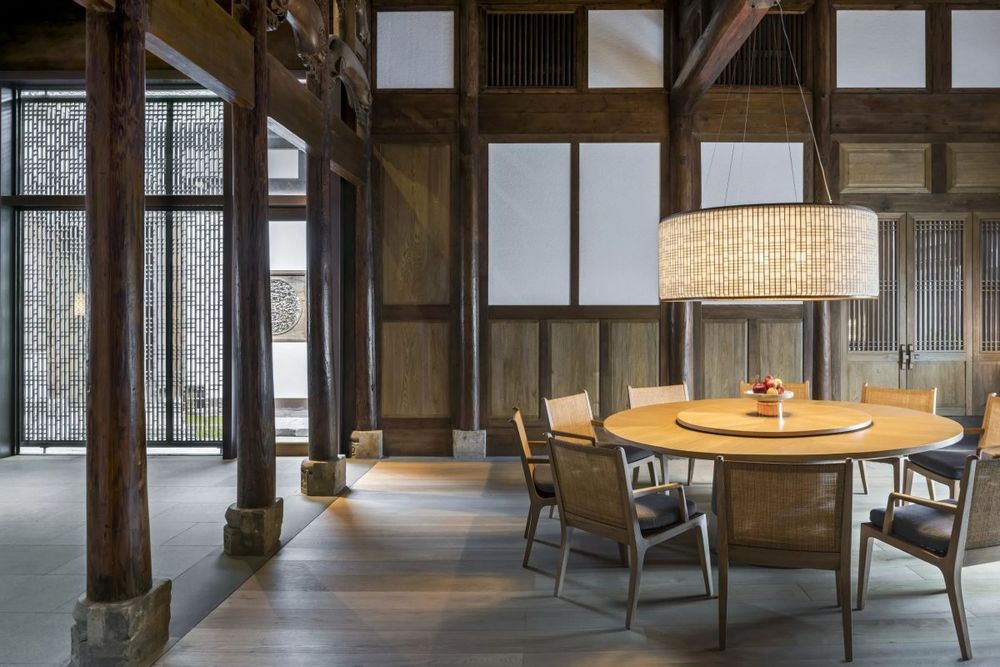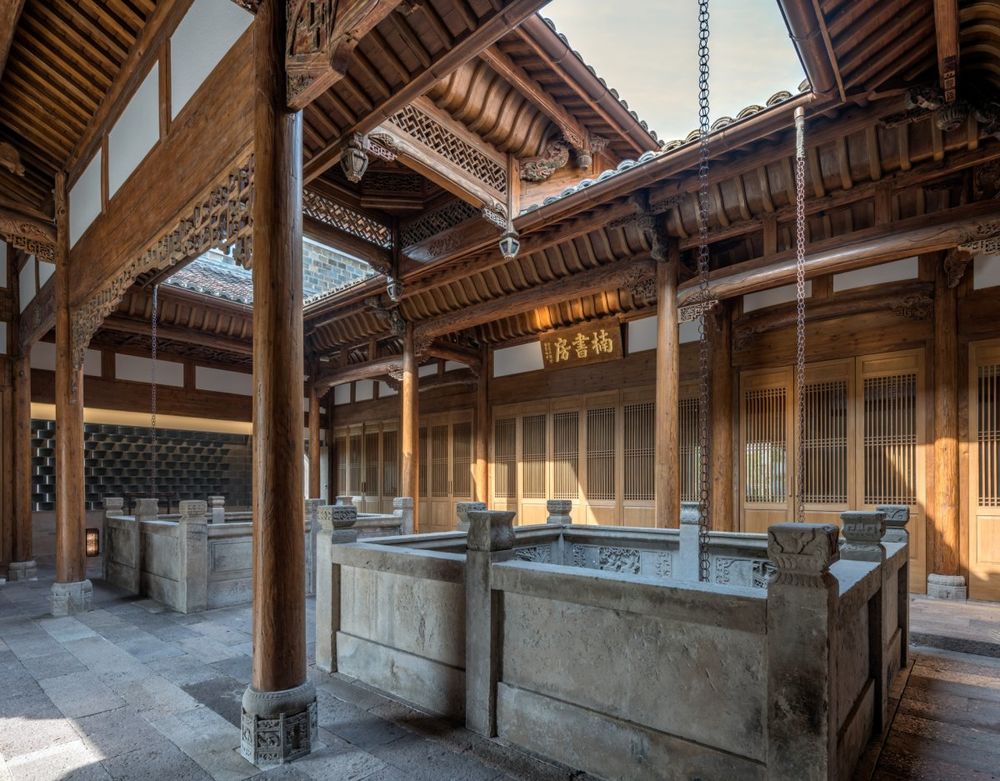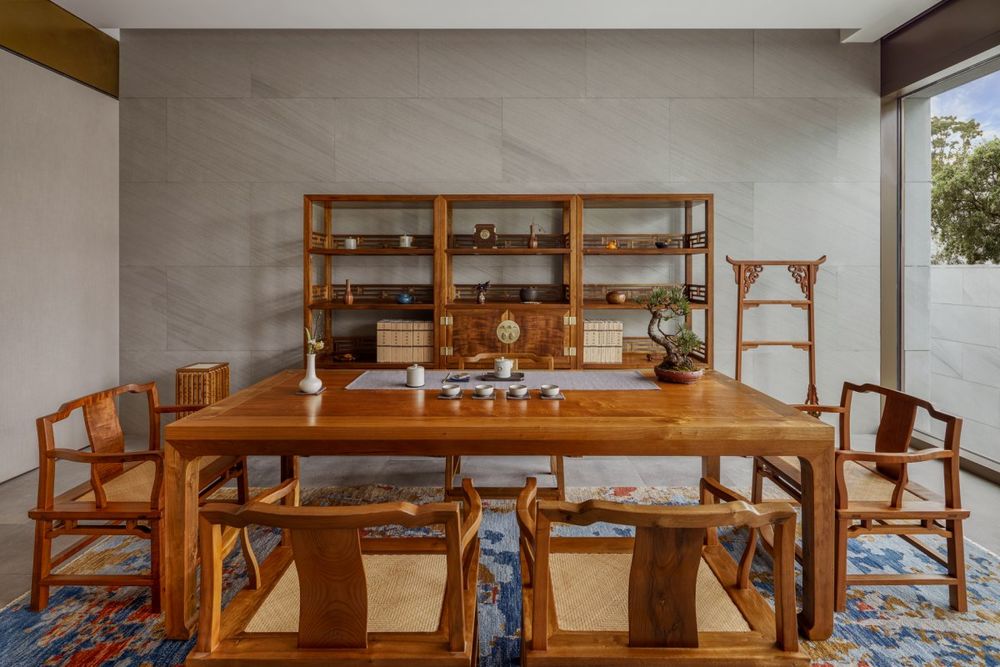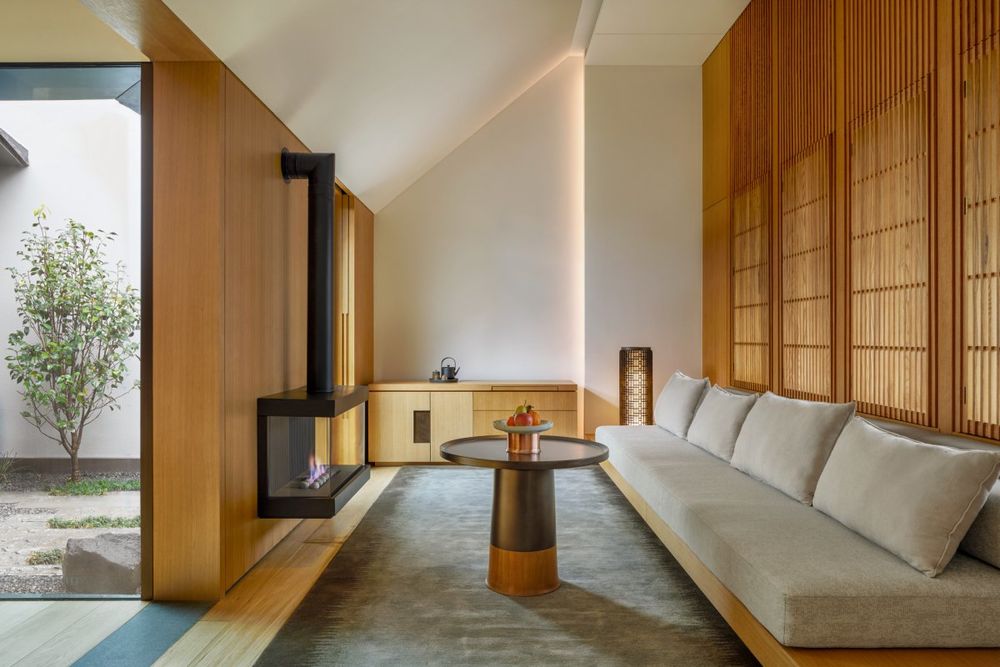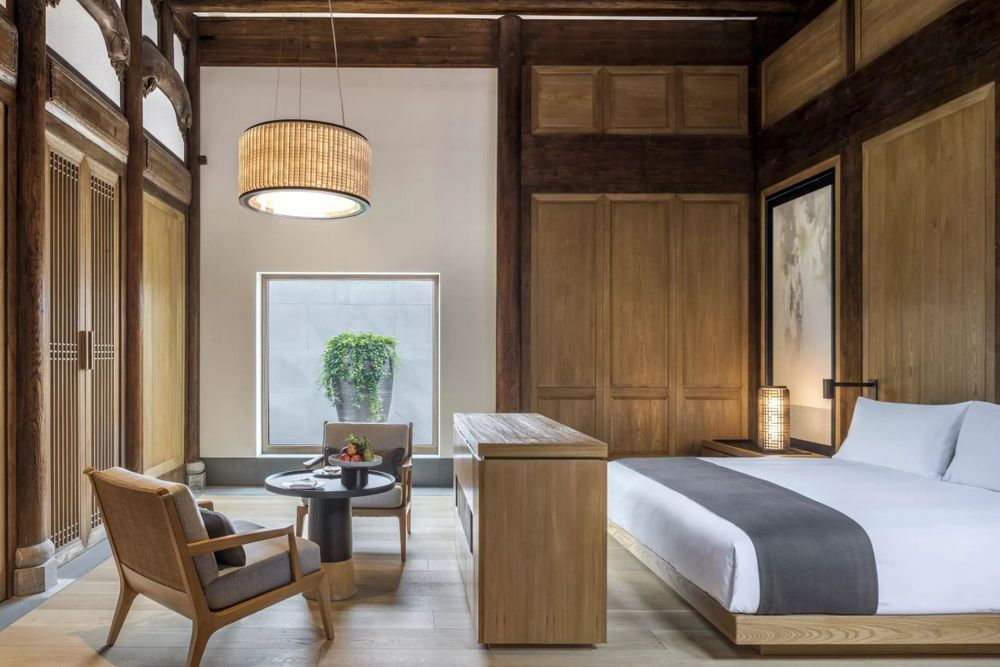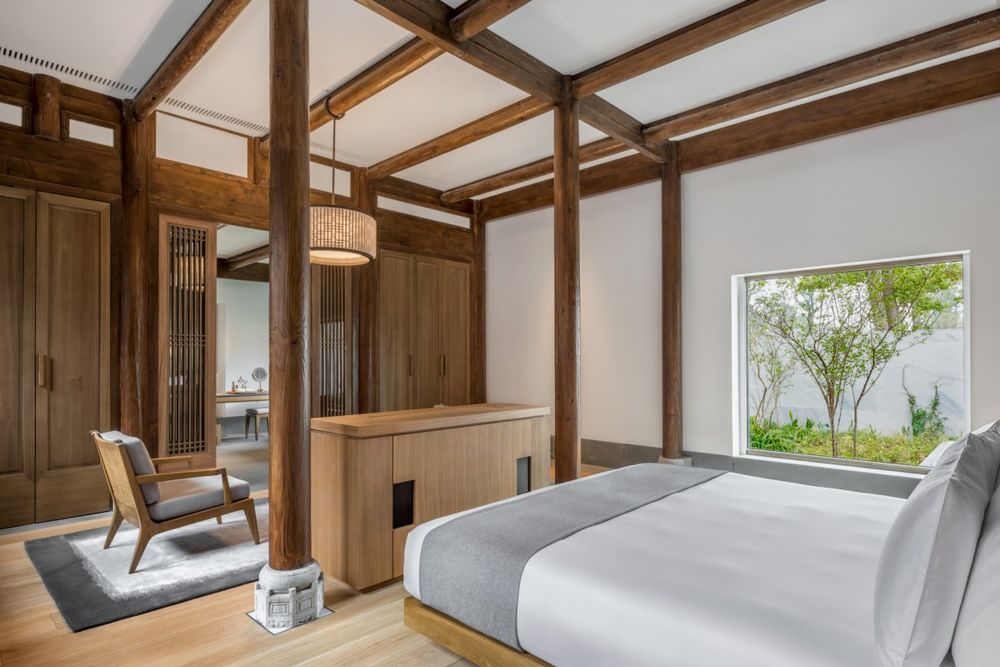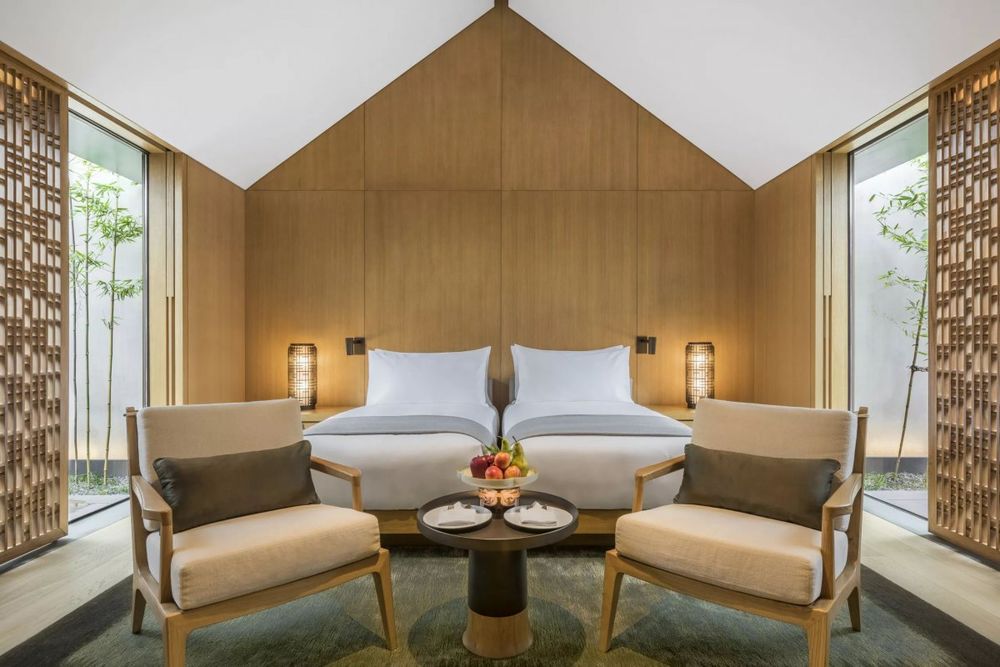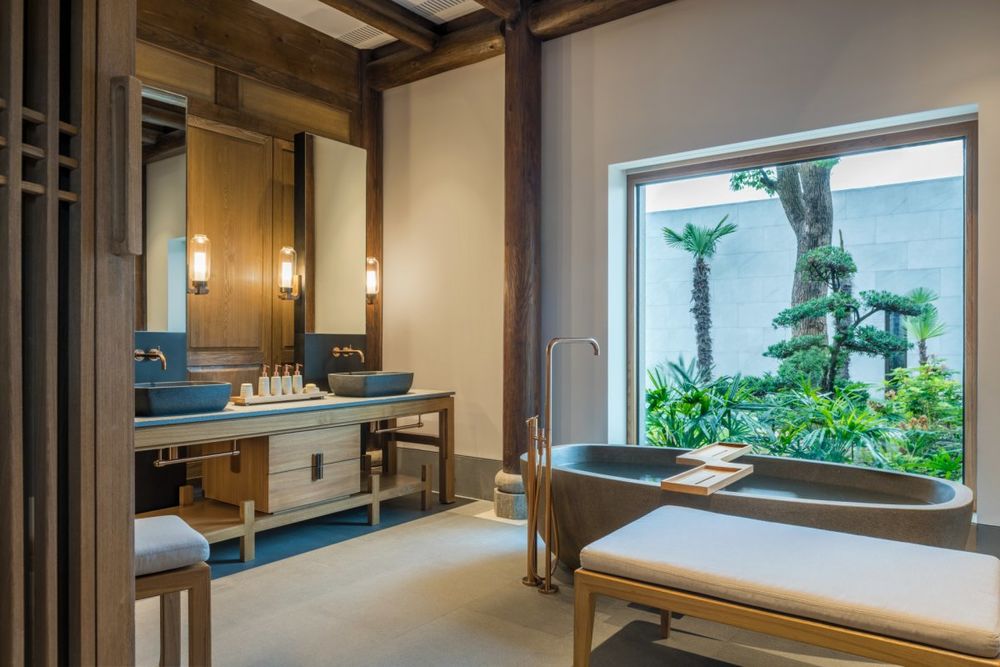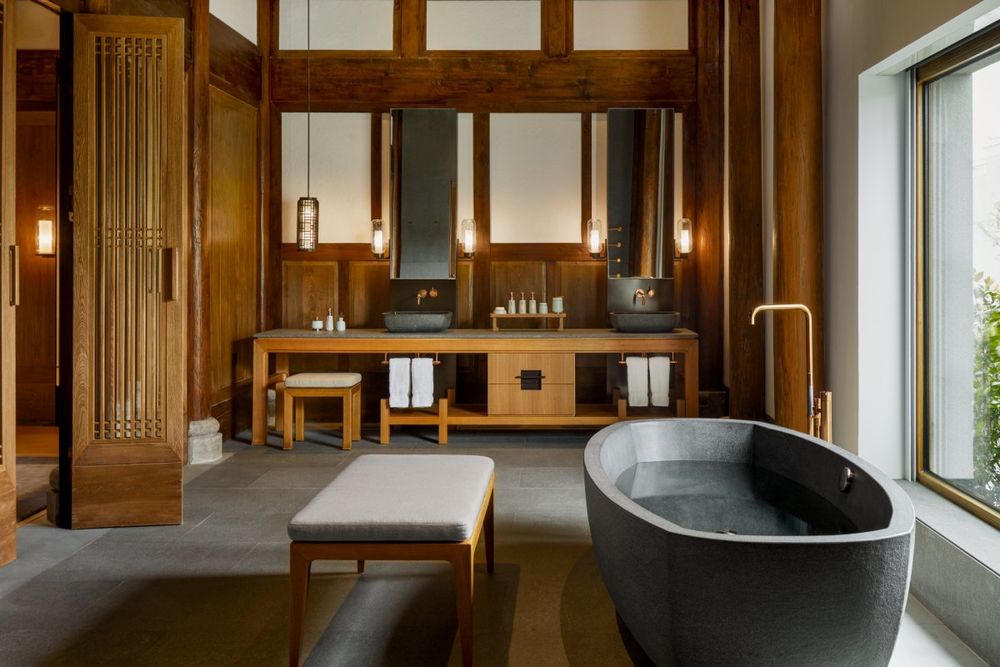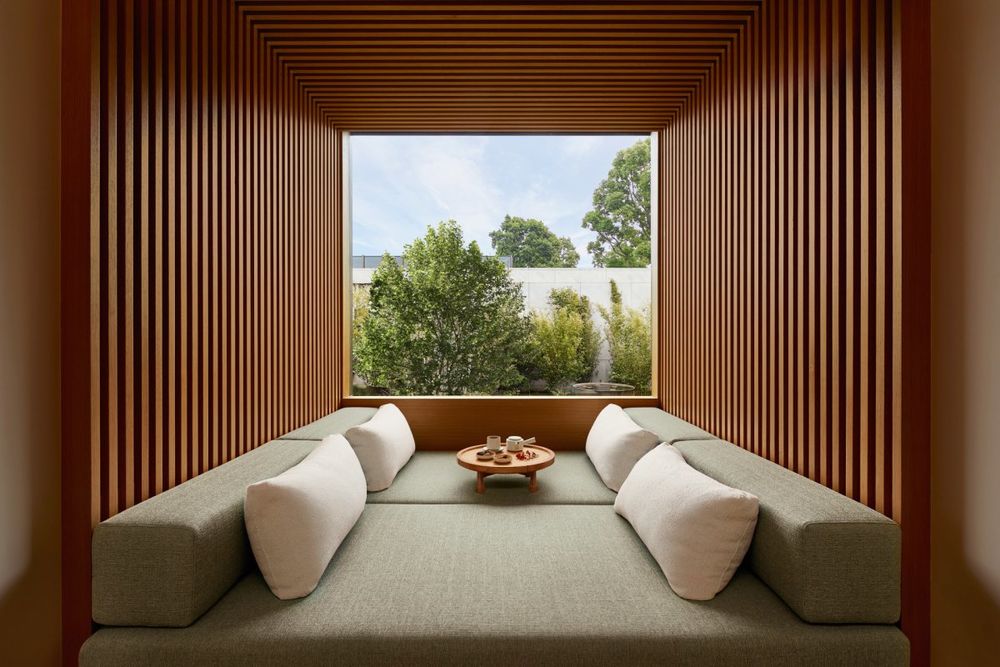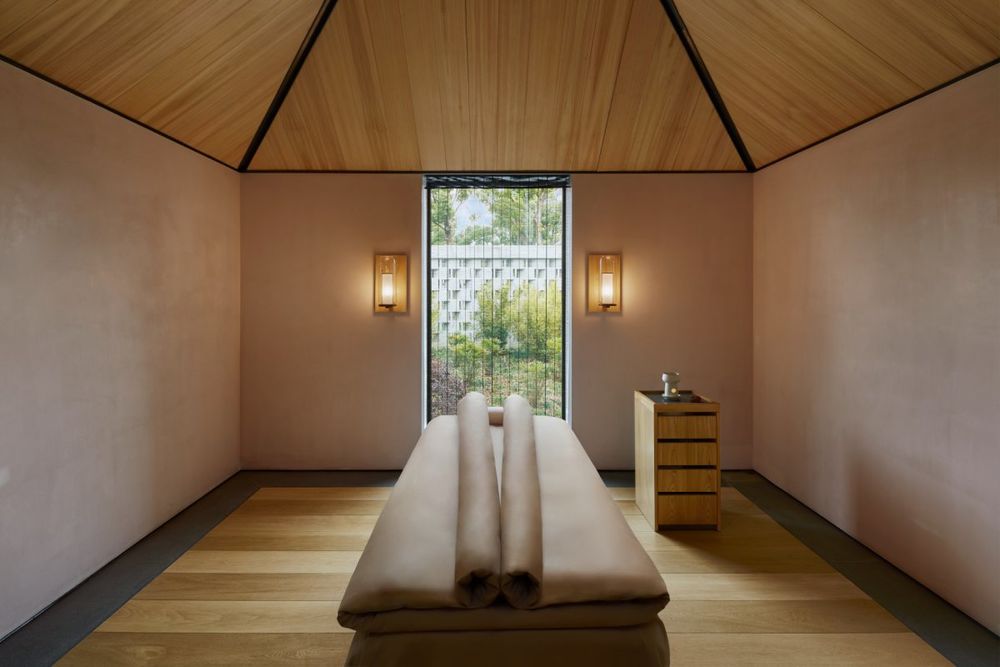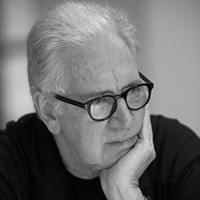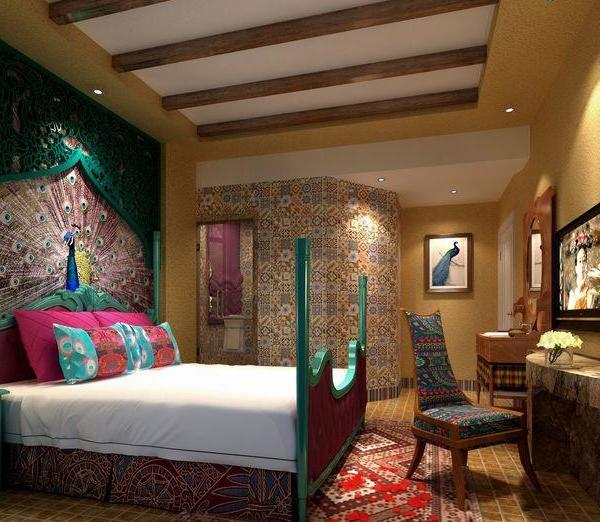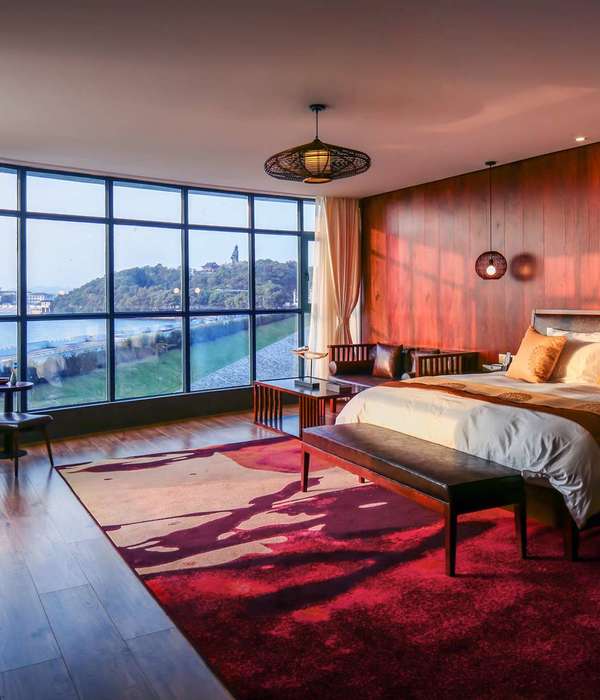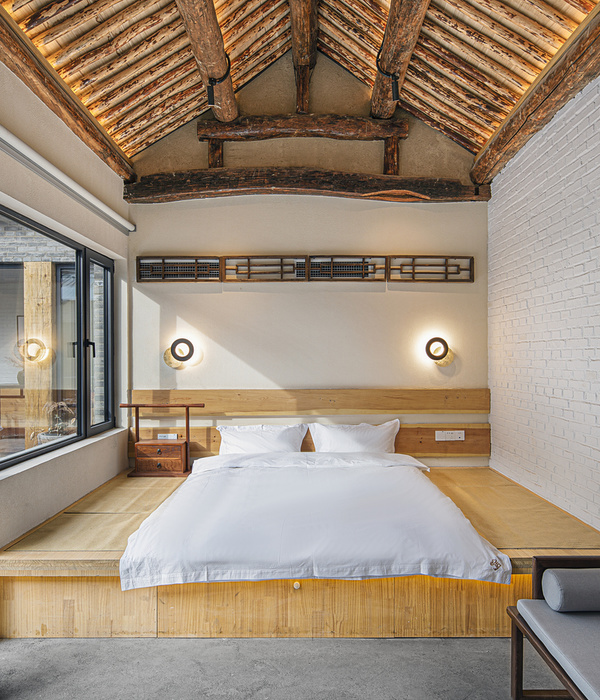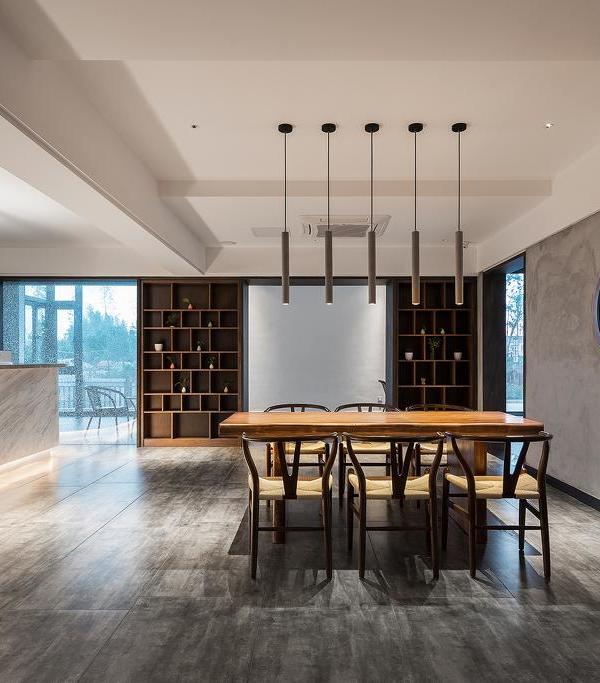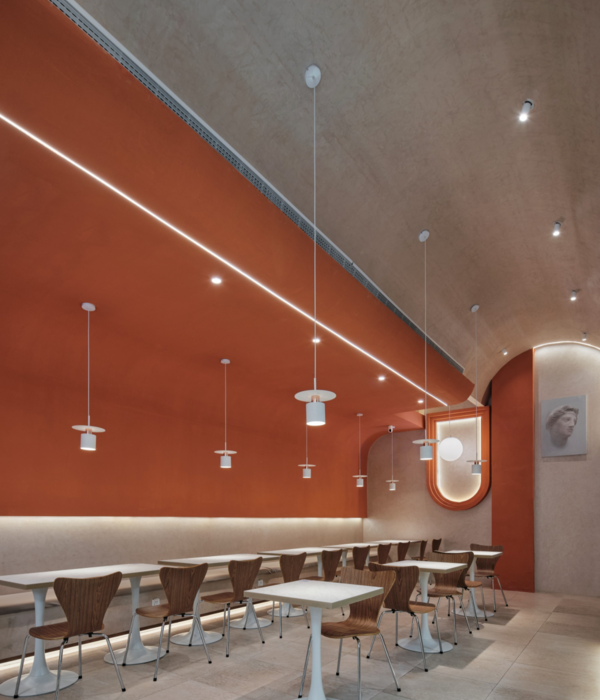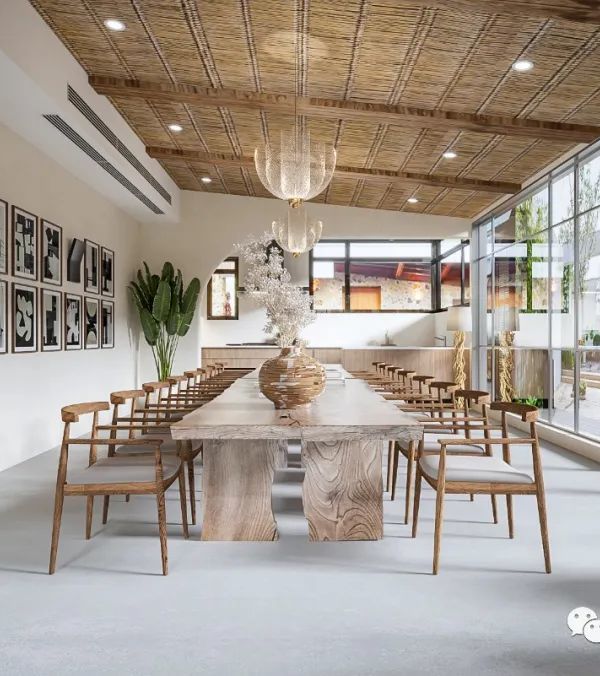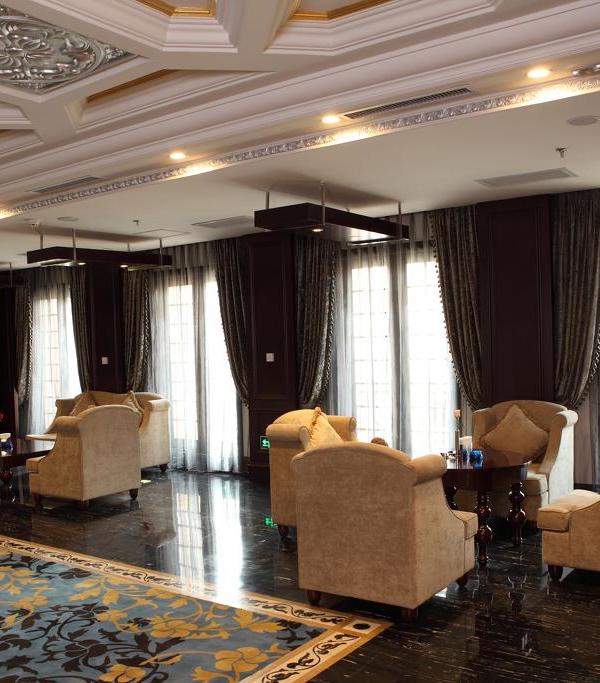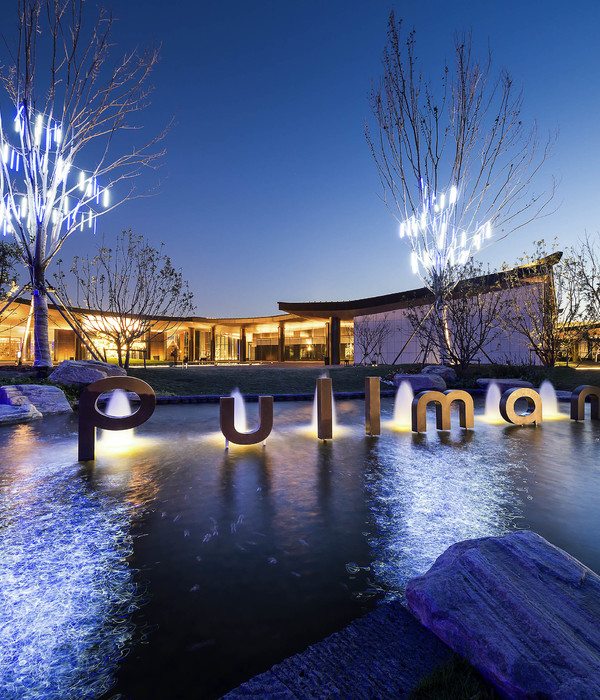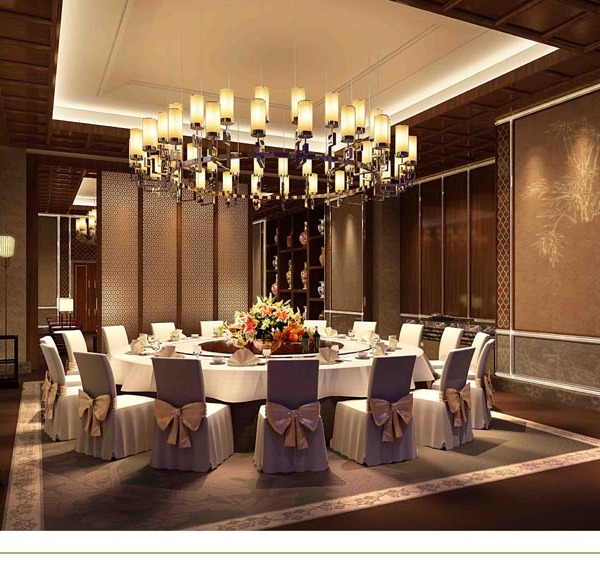上海养云安缦 | 重构明清古建筑,打造奢华静修之地
Amanyangyun位于上海,坐落在茂密的古樟树林中,这是一个风景如画的静修之地,体现了中国精神、内省和美丽的精髓。在它的中心,有26座重新改建的明清民居,连同树木,被小心翼翼地一砖一瓦地从传说中的江西福州地区搬了过来。该度假村是由Kerry Hill建筑事务所设计的,作为一个2000年森林恢复的一部分。
The resort was designed by Kerry Hill Architects as part of a restoration of a 2,000 year old forest. Set in Shanghai, amidst a flourishing forest of ancient camphor trees, stands Amanyangyun, a picturesque retreat embodying the essence of Chinese spirituality, introspection and beauty. At its heart lies twenty six re-mastered Ming and Qing Dynasty houses which, with the trees, have been carefully moved brick by brick from the legendary region of Fuzhou in Jiangxi Province.
作为对中国最具历史意义的地区之一的宏伟致敬, Amanyangyun是保护专家和设计师多年精心修复和保护的巅峰之作。该度假村保护着无价的自然和文化宝藏,赋予了古老的房屋和古老的森林新的生命,这一壮举使 Amanyangyun成为世界上最罕见的奢侈机会之一。
A magnificent tribute to one of China’s most historic areas, Amanyangyun is the culmination of years of careful restoration and conservation eorts by preservation experts and designers. The resort safeguards priceless natural and cultural treasures, giving a new life to antique houses and an ancient forest, a feat that stands to make Amanyangyun one of the rarest luxury opportunities in the world.
在2019 AHEAD Asia颁奖典礼上,Amanyangyun酒店荣获年度最佳酒店奖。Kerry Hill建筑事务所修复了50座明清时期的古建筑。这些古老的建筑被仔细地拆除,并在新的场地上重建,以提供酒店的主要结构。
The Amanyangyun won the award for Hotel of the Year at the 2019 AHEAD Asia awards. Kerry Hill Architects restored 50 antique houses from the Ming and Qing dynasties.The antique structures were carefully dismantled and rebuilt on the new site to supply the main structures of the hotel.
修复后的建筑包括酒店的24间客房、43栋别墅和公共空间。酒店设有文化中心,为客人提供中国文化教育活动。除了度假村的设施,每个私人住宅都包括一个大型灵活的多用途层,设计为包括最先进的画廊,电影院,健身房,茶室和酒窖。酒店的布局基于“围村”的概念,由几个被客房包围的院落组成,这是中国常见的住房类型。
The restored buildings comprise the hotel's 24 guest rooms, 43 villas and public spaces.The hotel includes a cultural centre offering guests an education in Chinese cultural activities. In addition to the amenities of the resort, each private residence includes a large flexible multi-purpose level which has been designed to include a state-of-the-art gallery, cinema, gym, tea-room and wine cellar.The layout of the hotel is based on the concept of "a walled village" consisting of several courtyards surrounded by guest rooms, a common Chinese housing typology.

